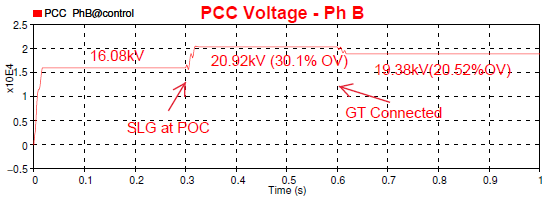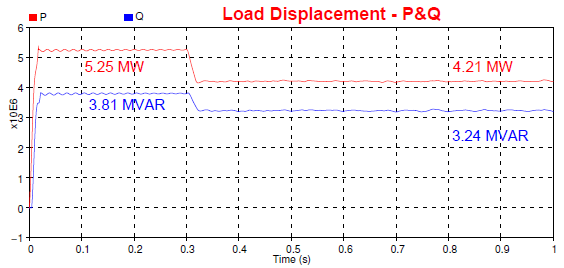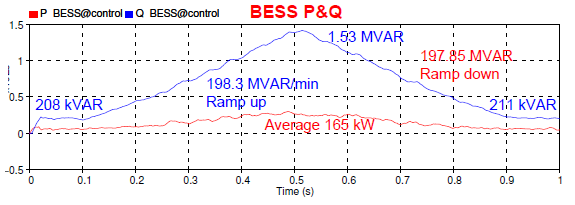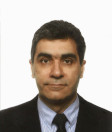How DERs Could Change Grid Topology and Affect System Performance
By Mehrdad Rostami and Mehrdad Boloorchi
The penetration of Distributed Energy Resources (DER) in primary distribution systems which operate in a radial and open-loop topology, need smarter primary network, especially for dealing with the variable generations such as solar photovoltaic and wind turbine generator, as well as demand response. This provides the condition to have highly resilient and self-healing primary network with a flexible and dynamic topology, which operates as an interconnected smart microgrids. However, realization of this goal requires careful study of the DER’s impact on primary system and their integration into the system. This article describes the impacts of DER integration into the grid and measures that shall be taken for their reasonable integration in order to substantiate a flexible and dynamic grid topology. Impacts of DER on grid varies for different types of DER, their applications, location, and characteristics of the power grid they are connected. These studies are called Distribution Impact Studies for Distributed Resource Interconnection, also known as CIA or Connection Impact Assessment. Some of the studies are discussed and possible impacts on the grid are highlighted.
DERs Integration and System Topology Change:
Integration of the DERs into the power systems, steadily and increasingly changes the nature of power systems all around the world. They are added to customers side, primary distribution systems as well as transmission systems. Careful integration of each DER provides the solid basis required for a highly resilient, self-healing, and flexible/adjustable topology.
Understanding the impacts of DER integration into the distribution system requires performing Distribution Impact Studies for Distributed Resource Interconnection, which when done in detail is called DTCIA or Detailed Technical Connection Impact Assessment.
The studies carried out in DTCIA depend on the type of DER, its size, application, location, and the grid characteristics.
Below are the most important DTCIA studies that would be assigned to assess impact of adding DER to power system:
1. Steady State/ Power Flow Study:
To evaluate active and reactive power flow before and after DER addition and to address if the interconnection has the potential to cause the grid to experience equipment overloads, sustained overvoltage conditions, excessive voltage fluctuations, or equipment control problems. This study may lead to change in the equipment size due to thermal and Voltage/Current capacities.
2. Short Circuit Current Contribution of DER:
To study the current contribution of DER in short circuits beyond the point of common coupling (PCC) which utility protection system shall detect and interrupt. This short-circuit current value is important for rating circuit breakers and designing properly coordinated protection schemes. This study may result in protection relay setting modifications of affected circuit breakers and updating control and protection scheme. Figure 1 shows how a Battery Energy Storage System (BESS) could contribute to fault current at PCC.
Figure 1: DER Fault current contribution

3. Temporary Overvoltage (TOV):
This terminology is sometimes mistaken for Transient Overvoltage. TOV naturally has power frequency while Transient Overvoltage which could result from lightning or switching oscillation has kilohertz frequencies. This study should confirm that the DER will not cause phase overvoltages during a single-phase to ground fault after the DER feeder is disconnected from the rest of the distribution system and the DER circuit is isolated from the ground reference. The degree of overvoltage on unfaulted phases during a single-phase to ground faults depends on the effectiveness of the overall grounding system. If the DER interconnection is not equally effectively grounded, the overvoltages on unfaulted phases can increase substantially when the DER is isolated from the circuit during a line-to-ground fault. This study may result in adding grounding transformer to the DER grid interconnection system to mitigate the temporary. Figure 2 shows how un-faulted (healthy) phases could experience TOV during the SLG (Single Line to Ground) fault and how it could be mitigated by a Grounding Transformer (GTR).
Figure 2: TOV on phase B and mitigation by GTR

4. Momentary DER Trip Study:
When working, sometimes DER takes the most burden of facility load from utility. Sudden trip of DER may cause serious voltage disturbances and fluctuations at PCC which could affect other customers connected to the same line. Figure 3 shows how sudden interruption of DER generation would change the PCC voltage.
Figure 3: Momentary interruption of DER

5. Load Displacement Study:
For those DERs which are installed for load displacement, the amount of energy curtailed from utility shall be shown. This study will show how much load will be taken off from utility incoming line and how much distribution line could be free to supply other demanding customers.
Figure 4, shows load displacement function of DER.Figure 4: Load displacement function of DER

6. RSVC Study:
Reactive Support and Voltage Control or RSVC is one of the ancillary services that is considered for DERs in IEEE 1547-2018 revision standard. This study shows how much installed DER is capable of adjusting, compensating, and regulating voltage at PCC which could result in a better voltage profile for neighboring customers as well. Figure 5 shows how a DER could help the voltage profile at PCC by RSVC services provided by DER.
Figure 5: Voltage profile correction by RSVC services

7. Active and Reactive Power Ramp Up/Down:
Inverter based DERs are very fast responding power generators. Unlike synchronous machines, they can suddenly inject or absorb large amount of active or reactive power which may result to voltage and frequency disturbances. Power ramp study shows how much frequency and voltage at PCC could be affected and in what limit DER can change the generated (or absorbed) output power. Results of this study is used in inverter droop control model for voltage and frequency regulation. Figure 6 shows the fast ramp-up of VAR applied to test system performance at PCC.
Figure 6: DER Reactive Power Ramp up/down

8. Power Quality Study:
This study is very important when the DER is inverter base and used in high penetration in the area. Power quality study could contain harmonic analysis and/or flicker study. In some applications, like type 3 windfarms, the individual harmonics could be acceptable but existing inter-harmonics could amplify known harmful harmonics like H3 or H5. This study may lead to design and installation of harmonic filters if required.
9. Anti-Islanding Study:
Anti-Islanding function is one of the radical functions that changes system topology. Usually when an upstream fault occurs, the utility sends the Anti Islanding protection signal, a.k.a transfer trip command to DER to shut down generation. This could continue to fully isolate the facility in some cases. Anti-Islanding operation and system transients during this incident (which is less than two seconds) shall be simulated and analyzed. Figure 7 shows how BESS responds to an anti-Islanding signal due to a fault in the upstream network.
Figure 7: Anti Islanding function of BESS

10. Protection Scheme Review Before and After Adding DER is Essential.
DER integration requires careful contemplating of the DER grid connection protection and control system which shall be based on the results of the connection impact studies and shall be in accord with the main objective of substantiation of a dynamic and flexible grid topology.
Some of the above studies could be done in phasor domain using the phasor domain power system analysis tools, however, all of them can be modeled and simulated in time-domain power system analysis tools.
Conclusion:
Careful integration of DERs can result in a dynamic and flexible topology of the open-loop primary systems and provide a high level of resiliency and reliability, especially, when they are highly penetrated. For connecting each DER to the grid, set of studies called Distribution Impact Studies for Distributed Resource Interconnection, a.k.a. DTCIA shall be performed to assess the impact of DER connection to the grid. It is highly recommended to use time-domain based system analysis tool as most of the impacts are non-power frequency and categorized as semi fast to fast transients.
This article edited by Karen Bengali
For a downloadable copy of June 2020 eNewsletter which includes this article, please visit the IEEE Smart Grid Resource Center.


To have the Bulletin delivered monthly to your inbox, join the IEEE Smart Grid Community.
Past Issues
To view archived articles, and issues, which deliver rich insight into the forces shaping the future of the smart grid. Older Bulletins (formerly eNewsletter) can be found here. To download full issues, visit the publications section of the IEEE Smart Grid Resource Center.




